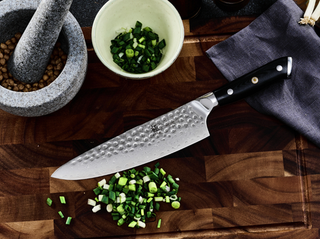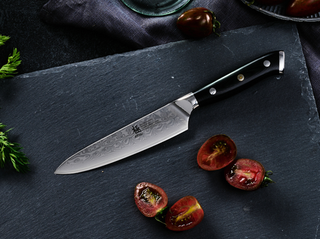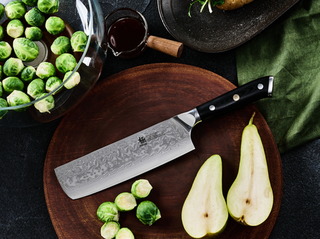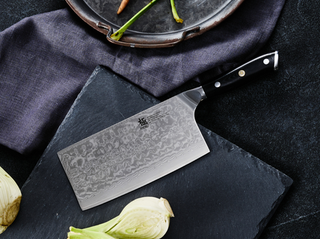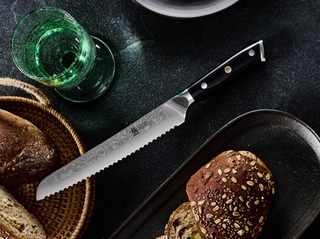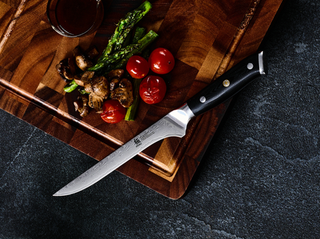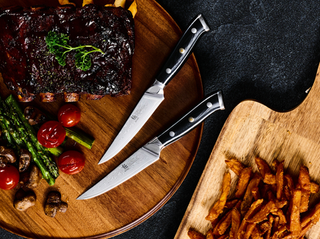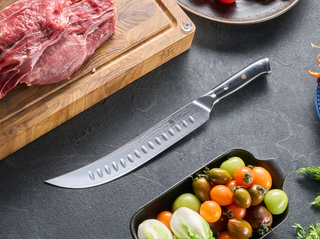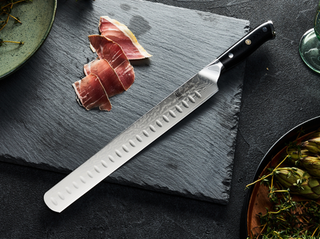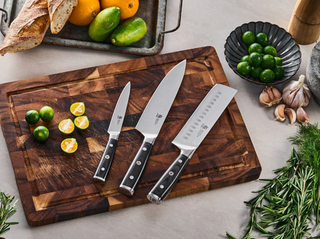Serrated Steak Knives or Non-serrated ones
When it comes to steak knives, our attitude is always a little hazy, "sharp", "good looking" would be fine. But who doesn't love a juicy steak and an enjoyable eating experience? The right steak knife can make all the difference!
Knives have a thousand different looks - a pair of steak knives and forks sells for anywhere from $5 to over $3,000, with blades that are serrated or flat-edged, handles that are metal or wood, colors, streamlines, styles and more - it's really overwhelming.
Picking a set of steak knives, be sure to first identify the shape of the blade. The most common type is the serrated steak knives and nonserrated ones.

Serrated Steak Knives
Advantages- More durable and maintains sharpness for longer.
- Natural texture.
- The ability to cleanly cut steaks or side dishes with a thick or hard exterior.
- No special maintenance is required, and the serrated design effectively extends the blade's sharpness.
Disadvantages
The back and forth cutting pprocess, which tears the fibers instead of directly cutting the steak may cause the loss of juice. (But do not be overly picky, sharpness is the key)
Almost can not be sharpened at home, once the serrated steak knife gets dull, you need to go to a professional place to polish or sharpen it.
4-PIECE JAPANESE NON-SERRATED STEAK KNIFE SET | SAMURAI SERIES
$55.00
Shop Now >
Nonserrated Steak Knives
Advantages
- Stronger penetration, sharper cutting, one-time completion, avoiding pulling and squeezing.
- Provides smoother and neater cut.
- Can be resharpened at home with a knife sharpening tool.
Disadvantages
- More fragile. The finer the blade, the more fragile it is.
- Requires good care and placement to ensure the smooth and sharp performance.
How to choose between these two?
Most steaks can be handled with these two different blades, each with its own advantages and disadvantages, and as far as appearance preference is concerned, it's a matter of opinion.
We recommend nonserrated steak knives for those who prefer a more rare (medium-rare or so), juicy steak.
If you prefer a steak that forms a firm, charred, crispy crust, medium-rare or more, serrated steak knives are recommended.
There is also a fine serrated blade, which combines the advantages of a regular serrated blade and a nonserrated one, reducing the pulling force of the cut on the steak while ensuring an effective cut.
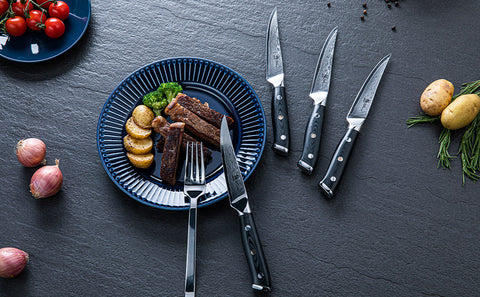
How to buy steak knives that you wont regret later?
Sharpness
A sharp steak knife garantgees you a good cutting experience, in addition to helping diners save juices and get the best eating experience. Imagine how much juice and strength is lost when a dull knife is repeatedly pulled on a steak, and how embarrassing it would be if it accidentally cuts the bottom of the plate or pushes the steak out.
But every coin has two sides, and if you're worried about hurting the cutlery itself, just keep the knife blade smooth.
Quick Test: Find a paper and cut through it. As long as you can easily cut without jamming on it, it's sharp enough for use.
Balance
The overall streamlined design of the knife is ergonomic, that is, very handy and more comfortable for dining.
There should be a pivot point to hold on to. The overall texture, as well as the perfect weight and size between the blade and handle can guide you well in cutting steak. This way it won't feel too narrow, too light, too slippery, etc.
Of course, this varies from person to person, the size, strength of each hand is different. There is no best structural type, but there is the most suitable for you.
Integration and aesthetics
As a dining kitchen utensils, the look of it is also important. Everyone has their own unique aesthetic perspective, so it is more subjective and the appearance is the main reason
Consider integrating steak knives into the overall cookware style, or choose a design that is full of texture, or the set that is highly ornamental.
Price
The price of a tool is a reflection of its cost, design, brand and target customer.
However, it does not mean that expensive is a more worthy choice than affordable.
If you use it more frequently, you can choose an exquisite knife; but if it is only for occasional consumption by a novice, choosing an affordable knife will be fine.
